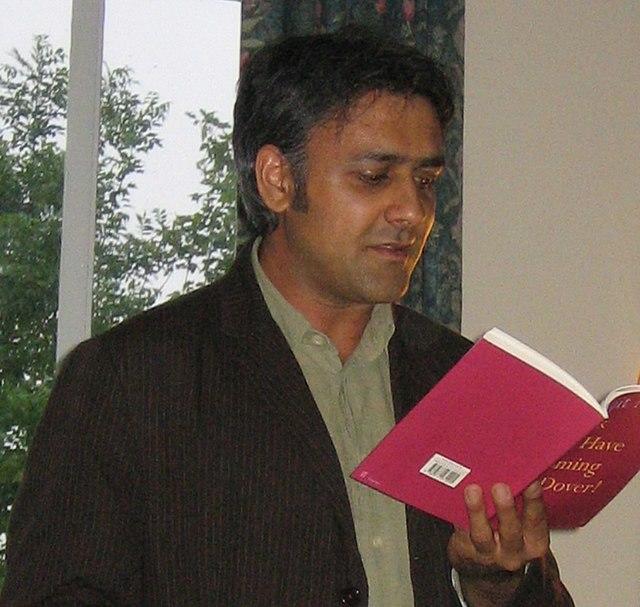Chapters
Born in London in 1966, Daljit Nagra is a famous British Poet who rose to international fame after he published "Singh Song!" in his debut collection "Look We Have Coming to Dover!". His unique style and powerful storytelling have made him one of the most influential voices in contemporary British poetry.
The poem is told through the dramatic, compelling, and often humorous monologue of a young Sikh man working in his family's corner shop, and has captured the hearts and minds of readers across the globe.
In the following article, we’ll take a magnifying glass to Daljit Nagra’s most famous work, focusing on how he used language, imagery, and themes in order to create such a beloved and relatable piece of art centred around the immigrant experience.
Love poetry and want to find out more about Daljit Nagra’s literary masterpiece? Then make sure to keep reading below.

How is "Singh Song!" Structured?
So how is Singh Song structured? Firstly, unlike many other famous poems, it doesn’t actually follow a strict rhyme or scheme meter. Instead, it’s written in free verse, which goes a long way in contributing to its more natural and song-like flow. This unconventional structure also allows Nagra to create a sense of authenticity in the narrator's voice too.
Alongside this, the poem is also divided into four individual stanzas of varying lengths, each of which focuses on a completely different aspect of the narrator's life and thoughts.
For instance, the first stanza introduces the narrator's world, his shop, and his daily routine. After this, the second stanza focuses more on his relationship with his wife and the tensions between his work and personal life.
The next stanza in the poem explores the narrator's desires beyond the confines of the shop, while the fourth and final stanza aptly brings the poem to a close by reflecting about his overall identity and place in the world.
Generally, each line in the poem is short and punchy and more often than not ends with some sort of humorous twist.
Additionally, another common feature of Daljit Nagra’s work is its use of Enjambment. What is Enjambment? Well, in poetry circles, enjambment essentially refers to the continuation of a sentence or phrase from one line to the next without any punctuation.
Used extensively throughout, it gives the poem a sense of forward momentum and energy - reflecting the narrator's restless spirit and his constant battle between juggling work and his desire to spend time alone with his wife.
Free Verse is a form of poetry that lacks a consistent rhyme scheme or meter, and that closely mirrors the cadences of normal everyday speech.
How Does the Author Use Language and Imagery in the Poem?
If you ever read or listen to Singh Song yourself, one of the first things you’ll notice is the author's habit of combining English and Punjabi words throughout the poem. The reason for this?
Well, by doing this, Nagra not only gives the narrator a unique voice but also shows the man's dual identity as a British Sikh. This mix of languages is also intended to show how the main character is caught between two different cultures
One clear example is the use of Punjabi words like "pooni" (a type of bread) and "di" alongside other English words and phrases. Additionally, grammar and spelling-wise, Singh Song also commonly features words like "ven" and "yoo '' instead of when and you.
Again, this is primarily the author's way of giving the poem a more relatable and conversational tone. Simply put, these unique linguistic choices go a long way in making the narrator feel like an authentic and relatable person - almost as if he were sharing his story with us, the reader, directly.
Similarly, imagery is another big aspect of Singh Song too. Throughout the poem, Nagra uses a wide range of vivid details to bring the narrator's world to life - including phrases like "di worst Indian takeaway" to the "cans of ten p Coke an watered down milk".
Nowhere is this more apparent than in how singh song describes food. Take these lines for example - "Ven I return from di pubbing, I rush past di wife n baby to my freshly stocked shelving, di garlic ginger chilli jars, di turmeric n di masala tins."
Here, Nagra's vivid descriptions of the spices and ingredients help us picture the narrator's shop in our mind and also highlights how passionate he is about food in general.

What are the Main Themes of "Singh Song!"?
All in all, Singh Song explores a wide range of different themes, many of which revolve around the experiences faced by British-Asian communities living in London and throughout the UK.
At its core, the poem’s main focus is around identity. The protagonist, who is a British-Indian man, finds himself trying to navigate the complexities of his own sense of self. Throughout the poem, Nagra demonstrates how the protagonist's identity is closely shaped by his cultural heritage, his life in Britain, and his personal relationships.
For many Sikhs, it’s not always easy to balance traditional values with the realities of living in a multicultural society, and the poem highlights the challenges the protagonist faces as he tries to find a middle ground between his roots and the present circumstances he finds himself in.
Alongside this, love and relationships are another significant theme that is present throughout most of Singh Song as well. For example, the tender and intimate portrayal of the protagonist's love for his wife is intended to show the strength of their bond and the comfort they find in each other - especially when faced with hardships such as their families disapproval and the challenges associated with running the flailing corner shop.
Conclusion
In conclusion, “Singh Song!” is one of Daljit Nagra’s best works. Weaving words together expertly, the poem details the moving and humorous story of a young British Sikh man trapped between the burden of responsibilities and spending time with the person he loves. Through the inventive use of language, rich imagery, and themes that many can relate to, the poem provides a highly compelling perspective on the challenges many immigrants face living in modern day Britain.













